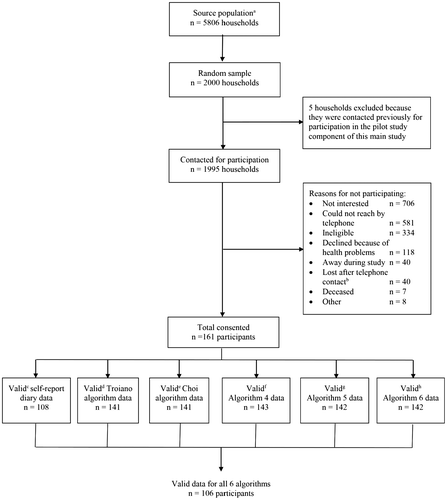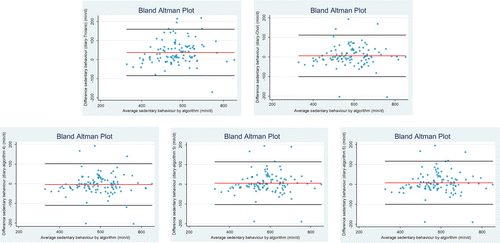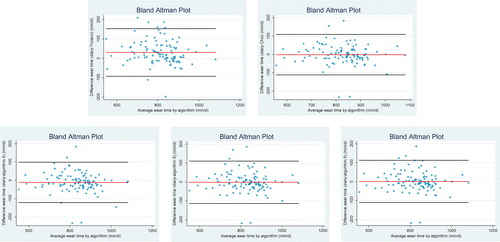aHouseholds in our study area (Burnaby, New Westminister, North Vancouver, Richmond, Surrey, Vancouver, West Vancouver, White Rock) that receive a Shelter Aid for Elderly Renters rental subsidy from BC Housing, have a head of household aged ≥65 years, and a telephone number on file with BC Housing.
bCould not be reached again after expression of interests in study participation.
cAs measured by self-report diary, based on ≥3 days with ≥480 min/day valid wear time; non-wear time determined by self-report.
dAs measured by accelerometry (ActiGraph GT3X+, 60 s epochs), based on ≥3 days with ≥480 min/day valid wear time; non wear time defined as ≥60 min of continuous zeroes, allowing for up to 2 min of counts ≤100 (Troiano et al.,
Citation2008).
eAs measured by accelerometry (ActiGraph GT3X+, 60 s epochs), based on ≥3 days with ≥480 min/day valid wear time; non wear time defined as ≥90 min of consecutive zeroes, while allowing for up to 2 min of non-zero counts if the interruption was accompanied by 30 consecutive minutes of 0 counts either upstream or downstream (Choi et al.,
Citation2011).
fAs measured by accelerometry (ActiGraph GT3X+, 60 s epochs), based on ≥3 days with ≥480 min/day valid wear time; non wear time defined as ≥90 min of continuous zeroes, without any allowance for interruptions.
gAs measured by accelerometry (ActiGraph GT3X+, 60 s epochs), based on ≥3 days with ≥480 min/day valid wear time; non wear time defined as ≥90 min of continuous zeroes, while allowing for up to 2 min of counts <50 counts.
hAs measured by accelerometry (ActiGraph GT3X+, 60 s epochs), based on ≥3 days with ≥480 min/day valid wear time; non wear time defined as ≥90 min of continuous zeroes, while allowing for up to 2 min of counts <100 counts.



